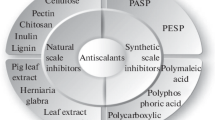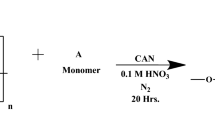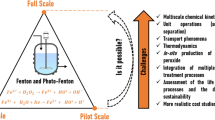Abstract
Scale formation is a challenge worldwide. Recently, scale inhibitors represent the best solution of this problem. The polyaminocarboxylic acids have been the first to be successfully applied in the field, although their efficacy was rather low. The next generation was developed on the grounds of polyphosphonic acids. The main disadvantage of these is associated with low biodegradation level. Polyacrylate-based phosphorous free inhibitors proposed as an alternative to phosphonates all also had low biodegradability. Thus, the main trend of recent R&D is the development of a new generation: environmentally friendly biodegradable scale inhibitors. The recent state of the word and domestic scale inhibitors markets is considered, the main industrial inhibitors manufacturers and marketed substances, as well as the general trends of R&D in the field, are characterized. It is demonstrated that most research is focused on biodegradable polymers and on phosponates with low phosphorus content, as well as on implementation of biodegradable fragments into polyacrylate matrixes for biodegradability enhancement. The problem of research results comparability is indicated along with domestic-made inhibitors quality and the gaps in scale inhibition mechanism. The actuality of fluorescent indicator fragment implementation into the scale inhibitor molecule for the better reagent monitoring in a cooling water system is specially emphasized.
Similar content being viewed by others
References
Yu. V. Balaban-Irmenin, G. Ya. Rudakova, and L. M. Markovich, Use of Anticrustator in Low Parameter Power Engineering (Novosti teplosnabzheniya, Moscow, 2011) [in Russian].
Scale Inhibitor Market by Type and by Application–Global Trends and Forecast to 2019. http://www.researchandmarkets.com/reports/2933881/scale-inhibitor-market-by-type-and-by-application# pos-0.
Study of Reagent Market for Industrial Preparation and Cleaning of Water (3rd issue), 2013–2014 Analytical Review of AT Consulting Company. http://www.atconsult.ru/vodopodgotovka.html.
J. McAdams and S. A. Parsons, “Calcium carbonate scale formation and control,” Rev. Environm. Sci. Biotechnology Control 3, 159–169 (2004).
World Market of Reagents for Water Preparation and Sewage Cleaning in 2009. Analytical Review of Abercade Company. http://www.abercade.ru/research/reports/316.html.
Study of Reagent Market for Industrial Preparation and Cleaning of Water. Russia. 2010–2011 Analytical Review of AT Consulting Company. http://www.atconsult.ru/vodopodgotovka.html.
N. M. Dyatlova, V. Ya. Temkina, and K. I. Popov, The Chelates and Metal Complexonates (Khimiya, Moscow, 1988) [in Russian].
MONSANTO Technical Bulletin 53-39 (E) ME Multifunctional Metal Ion Control Agents in Aqueous Solutions. Dequest 2040, 2050, 2060. 1983.
B. Nowack, “Environmental chemistry of phosphonates,” Water Res. 37, 2533–2546 (2003).
S. Held, “The Environmental Behavior of Complex Forming Phosphates,” Textilverwendlung 24 (11), 394–398 (1989).
A. L. Kavitha, T. Vasudevan, and H. Gurumallesh, “Evaluation of synthesized antiscalants for cooling water system application,” Desalination 268, 38–45 (2011).
F. Rahman, “Calcium sulfate precipitation studies with scale inhibitors for reverse osmosis desalination,” Desalination 319, 79–84 (2013).
C. Fu, Y. Zhou, G. Liu, J. Huang, W. Sun, W. Wu, “Inhibition of Ca3(PO4)2, CaCO3 and CaSO4 precipitation for industrial recycling water,” Industr. Eng. Chem. Res. 50, 10393–10399 (2011).
F. A. Setta and A. Neville, “Efficiency assessment of inhibitors on CaCO3 precipitation kinetics in the bulk and deposition on stainless steel surface (316 L),” Desalination 281, 340–347 (2011).
X. Zhanga, W. Wu, D. Li, and G. Zhao, “A new evaluation method of scale inhibitors for controlling CaCO3 scale in reverse osmosis system based on pH measurement,” Adv. Mater. Res. 356, 2146–2152 (2012).
D. Liu, W. Dong, F. Li, F. Hui, J. Ledion, “Comparative performance of polyepoxysuccinic acid and polyaspartic acid on scaling inhibition by static and rapid controlled precipitation methods,” Desalination 304, 1–10 (2012).
NACE Standard TM0374-2007 (formerly TM03742001). Item No. 21208.
K. I. Popov, V. E. Larchenko, and L. V. Krinitskaya, “Study of the industrially manufactured phosphonates. Scale inhibitor 1-hydroxyethylidenediphosphonic acid (HEDP MA),” Khim. Prom., No. 10, 663–665 (1996).
J. Silhanek, “Comparisons of the most important chemical databases—SciFinder and reaxys database systems,” Chem. Listy 108 (1), 83–90 (2014).
B. Zhang, D. Zhou, X. Lv, Y. Xu, and Y. Cui, “Synthesis of polyaspartic acid/3-amino-1H-1,2,4-triazole-5carboxylic acid hydrate graft copolymer and evaluation of its corrosion inhibition and scale inhibition performance,” Desalination 327, 32–38 (2013).
D. Hasson, H. Shemer, and A. Sher, “State of the art of friendly “green” scale control inhibitors: A review article,” Industr. Eng. Chem. Res. 50, 7601–7676 (2011).
Ch. P. Cheng, M. Saebo, M. A. Lunde, and M. A. Kelland, “Kinetic hydrate inhibition and scale inhibition by polyaspartamides,” Energy Fuels 25, 5165–5172 (2011).
G. M. Chaussemier, E. Pourmohtasham, D. Gelus, M. Pécoul, H. Perrot, J. Lédion, H. Cheap-Charpentier, and O. Horner, “State of art of natural inhibitors of calcium catbonate scaling: A review article,” Desalination 356, 47–55 (2015).
L. Ling, Y. Zhou, J. Huang, Q. Yao, G. Liu, and P. Zhang, “Carboxylate-terminated double-hydrophilic block copolymer as an effective and environmental inhibitor in cooling water systems,” Desalination 304, 33–40 (2012).
Y. Gao, L., Fan, L. Ward, Z. Liu, “Synthesis of polyaspartic acid derivative and evaluation of its corrosion and scale inhibition performance in seawater utilization,” Desalination 365, 220–226 (2015).
M. Dietzsch, M. Barz, T. Schueler, S. Klassen, M. Schreiber, N. Susewind, N. Loges, M. Lang, N. Hellmann, M. Fritz, K. Fisher, P. Theato, A. Kuhnle, M. Schmidt, R. Zentel, and W. Tremel, “PAA-PAMPS copolymers as an efficient tool to control CaCO3 scale formation,” Langmuir 29, 3080–3088 (2013).
Y. Xu, B. Zhang, L. Zhao, and Y. Cui, “Synthesis of polyaspartic acid/5-aminoorotic acid graft copolymer and evaluation of its scale inhibition and corrosion inhibition performance,” Desalination 311, 156–161 (2013).
Z. Amjad and P. G. Koutsoukos, “Evaluation of maleic acid based polymers as scale inhibitors and dispersants for Industrial water applications,” Desalination 335, 55–63 (2014).
H. Wang, Y. Zhou, Q. Yao, S. Ma, W. Wu, W. Sun, “Synthesis of fluorescent-tagged scale inhibitor and evaluation of its calcium carbonate precipitation performance,” Desalination 340, 1–10 (2014).
G. Liu, J. Huang, Y. Zhou, Q. Yao, H. Wang, L. Ling, P. Zhang, K. Cao, Y. Liu, W. Wu, “Carboxylate-terminated double-hydrophilic block copolymer containing fluorescent groups: an effective and environmentally friendly inhibitor for calcium carbonate scales,” Int. J. Polymeric Mater. Polymeric Biomater. 62, 678–685 (2013).
Z. Liu, X. Wang, Z. Liu, “Synthesis and properties of the ESA/AMPS copolymer,” Appl. Mech. Mater. 164, 194–198 (2012).
W. Shi, M. Xia, W. Lei, and F. Wang, “Molecular dynamics study of polyether polyamino methylene phosphonates as an inhibitor of anhydrite crystal,” Desalination 322, 137–143 (2013).
M. K. Jensen and M. A. Kelland, “A New class of hyperbranched polymeric scale inhibitor,” J. Petroleum Sci. Eng. 94–95, 66–72 (2012).
L. Lixiu and H. Aijiang, “Research progress of scale inhibition mechanism,” Adv. Mater. Res. 955, 2411–2414 (2014).
M. F. B. Sousa and C. A. Bertran, “New methodology based on static light scattering measurements for evaluation of inhibitors for in bulk CaCO3 crystallization,” J. Colloid Interface Sci. 420, 57–64 (2014).
X. Liu, W. Wang, X. Tong, Y. Ding, X. Zhao, H. Su, “Study of corrosion and scale inhibition of polyepoxysuccinic acid derivative,” Asian J. Chem. 26, 7716–7720 (2014).
K. I. Popov and H. Wanner, Stability constants data sources: critical evaluation and application for environmental speciation in Biogeochemistry of Chelating Agents (B. Nowack,, J. M. VanBriesen, Eds.) ACS Symposium Series, Vol. 910, Washington DS, 2005, pp. 50–75.
K. I. Popov, H. Rönkkömäki, and L. H. J. Lajunen, “Critical evaluation of stability constants of phosphonic acids,” Pure Appl. Chem. 73, 1641–1677 (2001).
B. N. Driker, S. A. Tarasova, A. G. Tarantaev, and A. N. Obozhin, “Low-molecular polymers as inhibitors of scales and corrosion,” Energosberezhenie i Vodopodgotovka, No. 6, 15–17 (2010).
B. N. Driker, A. V. Mikryukov, and A. G. Tarantaev, “Experience of use of organophosphonate-based composition for stabilization water treatment in power engineering and metallurgy,” Vodosnabzhenie I Kanalizatsiya, Nos. 1–2, 60–62 (2014).
F. F. Chausov, I. S. Kazantseva, R. G. Akashkina, S. P. Kuz’kina, and R. M. Zakirova, “Analysis of molecular structure and exploitation properties of inhibitors of scales and corrosion,” Izvestiya vuzov. Ser. Khim. Khim. Tekhnol. 55, 81–85 (2012).
M. A. Varfolomeev, A. V. Gerasimov, I. T. Rakipov, D. K. Nurgaliev, A. V. Luzhetskii, and I. I. Gabidullin, “An effective phosphonate based scale inhibitor in an alcohol-water mixed solvent,” Khim. Tekhnol. Topliv i Masel, No. 6, 84–86 (2014).
Author information
Authors and Affiliations
Corresponding author
Additional information
Original Russian Text © K.I. Popov, N.E. Kovaleva, G.Ya. Rudakova, S.P. Kombarova, V.E. Larchenko, 2016, published in Teploenergetika.
Rights and permissions
About this article
Cite this article
Popov, K.I., Kovaleva, N.E., Rudakova, G.Y. et al. Recent state-of-the-art of biodegradable scale inhibitors for cooling-water treatment applications (Review). Therm. Eng. 63, 122–129 (2016). https://doi.org/10.1134/S0040601516010092
Published:
Issue Date:
DOI: https://doi.org/10.1134/S0040601516010092




